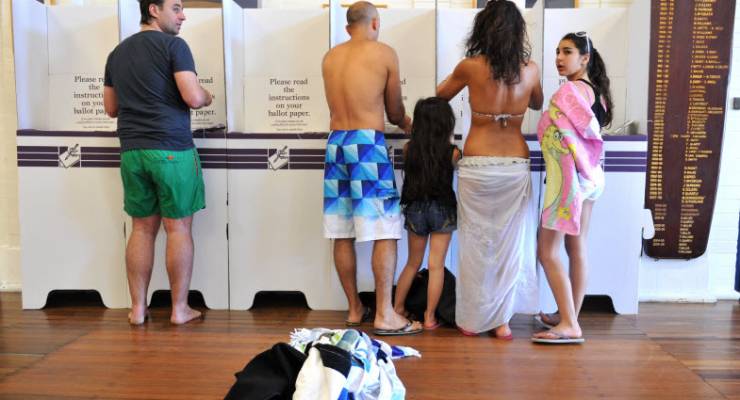
Social media company Snapchat is heading to court in the United States to fight for voters’ rights to take a selfie while in a polling booth. According to The New York Times, taking photos in polling booths is illegal in some states of America, with jurisdictions like Pennsylvania and Vermont charging fines of $1000 for people who take a snap of their votes. In New Hampshire, a federal court decision overturning the ban is being appealed, and Snapchat, the company responsible for photo messages that self-destruct within 10 seconds, has filed an amicus brief defending the “ballot selfie” under the First Amendment right to free speech. It says “a ballot selfie is a uniquely powerful form of political expression” in a rousing defence of photos that only last a moment:
“Ballot selfies are the latest in a long historical tradition of voters sharing their civic enthusiasm — and their votes — with their social networks. During the nineteenth century, voting was more than casting a ballot. Election Day was a social occasion, with political parties sponsoring raucous gatherings at the polls. The public spectacle led to high voter turnout, as voters lingering to see and be seen drew in even more neighbors to vote and mingle. The secret ballot put a stop to parties at the polls, but the practice of advertising one’s political pride has continued. Starting with the 1896 election, voters wore their pride in the form of campaign buttons, signaling their support for candidates and causes. And in recent years, voters have flocked to the ‘I Voted’ sticker to show their civic engagement. Whatever its form, the voter’s message is the same: I’m participating in the civic process, and you should, too.
“Ballot selfies are thus all at once deeply personal and virtuously public expressions.
“The ballot selfie captures the very essence of that process as it happens — the pulled lever, the filled-in bubble, the punched-out chad — and thus dramatizes the power that one person has to influence our government. But beyond that, ballot selfies help the media perform its watchdog role in elections. Ballot-design problems — whether butterfly ballots, hanging chads, or some electronic glitch with computer screens — have all too frequently disrupted the orderly democratic process. A ballot-selfie ban like the State’s could deprive the public from learning about those problems or validating what might otherwise be dismissed as just unfounded anecdote.”
Opponents to photos in voting booths argue that limiting photos protects the right to a secret vote. We called the Australian Electoral Commission to ask if there were any rules around taking a selfie with one’s ballot in Australia. While there’s no ban on photos here, the AEC doesn’t advise people to take photos so they don’t compromise the secrecy of other voters’ ballot papers.







“While there’s no ban on photos here, the AEC doesn’t advise people to take photos so they don’t compromise the secrecy of other voters’ ballot papers.”
Did the author mean that the do advise people not to take photos of other people voting?